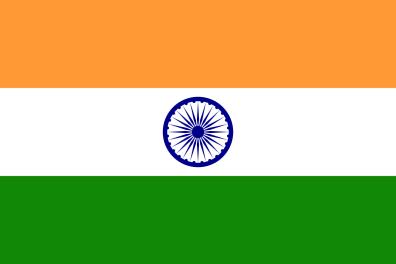This goes
to space
Aditya L1
Aditya L1 will be the first space based Indian mission to study the Sun. The spacecraft shall be placed in a halo orbit around the Lagrange point 1 (L1) of the Sun-Earth system, which is about 1.5 million km from the Earth.
A satellite placed in the halo orbit around the L1 point has the major advantage of continuously viewing the Sun without any occultation/eclipses. This will provide a greater advantage of observing the solar activities and its effect on space weather in real time. The spacecraft carries seven payloads to observe the photosphere, chromosphere and the outermost layers of the Sun (the corona) using electromagnetic and particle and magnetic field detectors. Using the special vantage point L1, four payloads directly view the Sun and the remaining three payloads carry out in-situ studies of particles and fields at the Lagrange point L1, thus providing important scientific studies of the propagatory effect of solar dynamics in the interplanetary medium
The suits of Aditya L1 payloads are expected to provide most crucial informations to understand the problem of coronal heating, coronal mass ejection, pre-flare and flare activities and their characteristics, dynamics of space weather, propagation of particle and fields etc.
Science Objectives:
The major science objectives of Aditya-L1 mission are:
Study of Solar upper atmospheric (chromosphere and corona) dynamics.
Study of chromospheric and coronal heating, physics of the partially ionized plasma, initiation of the coronal mass ejections, and flares
Observe the in-situ particle and plasma environment providing data for the study of particle dynamics from the Sun.
Physics of solar corona and its heating mechanism.
Diagnostics of the coronal and coronal loops plasma: Temperature, velocity and density.
Development, dynamics and origin of CMEs.
Identify the sequence of processes that occur at multiple layers (chromosphere, base and extended corona) which eventually leads to solar eruptive events.
Magnetic field topology and magnetic field measurements in the solar corona.
Drivers for space weather (origin, composition and dynamics of solar wind.
The instruments of Aditya-L1 are tuned to observe the solar atmosphere mainly the chromosphere and corona. In-situ instruments will observe the local environment at L1. There are total seven payloads on-board with four of them carrying out remote sensing of the Sun and three of them carrying in-situ observation.
Credit: ISRO

On this
rocket
Polar Satellite Launch Vehicle - XL (PSLV-XL)
The PSLV-XL is a powerful variant of India's Polar Satellite Launch Vehicle (PSLV), developed by the Indian Space Research Organisation (ISRO). The “XL” stands for “Extended Length,” referring to its larger solid strap-on boosters, which give it more thrust than the standard PSLV version. It is ISRO’s most frequently used configuration when missions require heavier payloads or higher orbits, such as sun-synchronous orbits (SSO) or geosynchronous transfer orbits (GTO).
Specs
Height: 44.5 meters
Diameter: 2.8 m (9 ft 2 in)
Mass:
PSLV-G: 295,000 kg (650,000 lb)
PSLV-CA: 230,000 kg (510,000 lb)
PSLV-XL: 320,000 kg (710,000 lb)
Stages: 4
The PSLV-XL features a four-stage design with alternate solid and liquid propulsion systems. The first stage is powered by a large solid rocket motor (S139), supported by six extended strap-on boosters (PSOM-XL), each loaded with 12 tonnes of solid propellant. The second stage uses a liquid Vikas engine fueled by UH25 and nitrogen tetroxide. The third stage is again solid-fueled, while the fourth and final stage consists of two liquid-fueled engines using MMH and MON-3, allowing fine orbital adjustments.
This configuration has earned a reputation for high reliability and flexibility, having launched a wide variety of payloads including remote sensing satellites, navigation spacecraft, and interplanetary probes. It’s particularly known for notable missions such as Chandrayaan-1, India’s first lunar orbiter, and the Mars Orbiter Mission (Mangalyaan). The PSLV-XL also made headlines for launching 104 satellites in a single mission (PSLV-C37), a world record at the time.

From this
launch site
First Launch Pad - Satish Dhawan Space Centre - Sriharikota, India
Satish Dhawan Space Centre or Sriharikota Range is a rocket launch center operated by the Indian Space Research Organisation. It is located in Sriharikota in Andhra Pradesh.
Chosen for its remote location, the center became operational in 1971 and hosted its first launch that year for a suborbital mission.
The first orbital launch took place on August 10, 1979.
The spaceport received its current name in 2005 when it was named in honor of Satish Dhawan, the former head of the Indian Space Research Organisation.
The facility has two launch pads and will be the base of India's upcoming human spaceflight program.
Image: ISRO

Here's where to view Aditya L1
Viewing Sites
- Satish Dhawan Launch Viewing Gallery
Another Launch
See All LaunchesGET THE SUPERCLUSTER APP
THE SUPERCLUSTER PODCAST
A podcast exploring the amazing milestones that changed space history, the wildest ideas that drive our future, and every development in this new Golden Age of Space.
Donate to support
Your support makes the Astronaut Database and Launch Tracker possible, and keeps all Supercluster content free.
SupportCOPYRIGHT 2021 SUPERCLUSTER LLC

